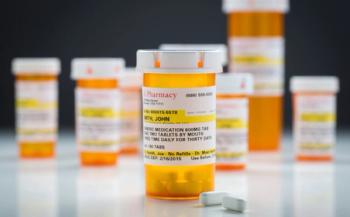
Patient-Centricity in Biopharma: Selling Health Versus Pills
Devesh Verma and Rebecca Lorenzo outline some the challenges and potential solutions to building a patient-centric culture
Modern-day patients demand to be heard through involvement in their treatment choices.1 Therefore, it is imperative that the biopharmaceutical industry continues focusing its time and resources on listening and adapting to patients' needs.The industry must also transform from a “pill-first” to a “health-first” mindset.
To achieve patient-centricity, biopharma companies need to do their part to increase trust with patients and connect across several key focus areas:
- Enhancing patient engagement to improve health outcomes. Within regulatory boundaries, biopharma manufacturers need to engage with patients in discovery, research, development, distribution, patient advocacy, and medical access to help improve patients' health outcomes.²
- Selling health versus pills. The industry's primary focus needs to be on improving health outcomes. Patients genuinely care about what the companies are doing to help them with their health conditions.
- Changing the perception of biopharma. Generally, the public perceives the biopharma industry‘s mindset to be “profit-first.” However, the industry can improve its perception in the public eye by placing patients at the center of every decision and empathizing more with their health needs.
- Focusing on real-world data and health outcomes. Biopharma must leverage innovative thinking, emerging technologies, and data sources to better understand patients and their health outcomes. To do so, these companies can partner with tech companies to mine data in real-time to help them identify improvements in health conditions.
Challenges of building a patient-centric culture
Most biopharma companies reference patient-centricity in some form in their mission statements. However, they face many logistical challenges to achieve their patient-centric mission.
- Existing regulations affect biopharma‘s ability to connect patients‘ data across the ecosystem. In clinical trials, a broad range of data exists across a wide range of patients. However, organizations walk a fine line between managing patient data privacy and harnessing valuable data for optimal drug research and development. Regulations such as the Health Insurance Portability and Accountability Act (HIPAA) prevent researchers from understanding how unique individuals interact and respond to specific treatments. These regulations are essential as they ensure entities do not share personally identifiable information without permission. However, these rules also prevent data integration across multiple sources as there is no common, unique identifier for a patient across various data sources. Hence, researchers struggle to form patient treatment modalities that integrate with real-world evidence (RWE) to improve outcomes for specific patient populations. The goal is for biopharma companies to leverage integrated data to understand health outcomes while ensuring absolute protection of patient privacy.
- Organizational silos in biopharma impede the industry‘s quest to become patient-centric. Biopharma companies are organized in silos around clinical, medical, and commercial functions. These siloes cause valuable information to scatter across these functions. Most companies lack a common function that connects patients from drug discovery to delivery. This absence of a patient-focused function impedes patient-first thinking, especially where functions lack clarity on overlapping responsibilities for patient care.³
Strategies to achieve patient centricity
To embrace a patient-centric culture, biopharma manufacturers must actively involve patients and their caregivers in the treatment process from beginning to end. Fortunately, many avenues exist for biopharma companies to evolve the existing model.
Building public trust involves companies actively becoming patient-first. Companies can build trust by clearly communicating medicines' risk-benefit profiles, the drug development process, and clinical trial results.⁴ One such example is Pfizer‘s initiatives to adopt a patient-first culture. The company prioritizes patients‘ voices by keeping them involved in shaping health policies, mandating patient-public consultation ahead of clinical trials, and providing them high-quality treatment information.⁵
Amidst the industry sprint for solutions, balancing patient privacy with understanding different conditions from data is critical. One solution is to partner with a common entity willing to invest and adequately manage all patient data, such as their treatments, lifestyle, adverse events, etc., while ensuring data privacy and compliance. Companies must also ensure that individuals feel their data is in safe hands. Typically, the government makes the general public uncomfortable when it is overly involved in data management. Notably, patients might be reluctant to give private companies their data if they believe they will use it with a selfish marketing intent. In such cases, a public-private partnership between the government and a private partner can effectively gain patients' trust while attaining integrated data for clinical research and outcomes.
Tailor medical treatment to individual patient genotypes through personalized medicine. Personalized medicine has shifted the role of biopharma companies from manufacturers to solution providers. This shift has revolutionized healthcare structures and logistical functions, demanding higher-quality service and reduced patient costs for life-saving treatments.⁶ Further, this shift requires an ecosystem of stakeholders and policymakers to encourage the widespread use of new tools and technologies. The regulatory process must evolve in response to advances targeted towards smaller patient populations based on genetic profiles to speed adoption. Further, policies and legislation must be enacted that provide incentives for innovative research and the adoption of new technologies.7
Revamping the drug development prioritization processes. Biopharma companies‘ core business model is to discover drugs that positively impact health outcomes. In the past, the industry heavily relied on “me-too” drugs to maintain profits. These drugs were cheaper and less risky to develop and had ready-made markets. From 1998 to 2003, over three-fourths of the 487 drugs the FDA approved were classified as having therapeutic qualities similar to one or more already-marketed drugs. However, the industry has recently begun shifting its focus towards developing drugs for patients suffering from debilitating untreated and rare conditions.
In 2018, more than half of the Food and Drug Administration‘s (FDA) Center for Drug Evaluation and Research (CDER) novel drug approvals were for rare or orphan diseases. Of these 34 products, the FDA approved 33 under the orphan drug designation — the highest number since the Orphan Drug Act passed in 1984.8
Partnering with tech companies to mine real-world data (RWD). Wearables are becoming a rich source of RWD for biopharma companies to create personalized patient treatment choices. One such example is Johnson and Johnson's collaboration with Apple for open enrollment on Heartline™. The healthcare and tech giant designed this study to explore if the Heartline Study iPhone app, coupled with the electrocardiogram (ECG) app and irregular heart rhythm notification on the Apple Watch, could improve health outcomes. This combination intends to detect atrial fibrillation (AFib) early — an irregular heart rhythm and the leading cause of stroke in the U.S.9 Such technology allows physicians and patients to monitor data in real-time to understand their health and identify red flags.
Broadening access to life-saving therapies through patient assistance programs. Biopharma manufacturers sponsor patient assistance programs (PAPs) to help under-insured or uninsured patients access drugs at little-to-no cost.10 Companies such as Merck value these programs as they align with their long-standing values and goals to put patients first.11 Companies can increase awareness of such programs to ensure every eligible patient can access life-saving medications.
Backing clinical research with health outcomes-based pricing.The industry can show its commitment toward patient health by offering drug prices or contracts based on real-world outcomes. Outcomes-based contracts offer possible ways for purchasers — such as insurers and health care systems — to improve value. Under such contracts, purchasers pay more for a drug when it works and less when it does not. This model creates tiered pricing or a rebate structure where the manufacturer refunds the payer some money if a certain population percentage does not meet the outcomes threshold.
The industry is already seeing some early examples of certain brands entering such outcomes-based contracts. Companies like Novartis and Gilead have already implemented outcomes-based pricing for drugs like Entresto® and Harvoni®.12, 13
Patient-centricity: The steps to a health-focused future
If COVID-19 taught us anything, predicting the future of healthcare is difficult. However, the biopharma industry‘s shift towards prioritizing patients and focusing on health outcomes is becoming more prevalent. The industry‘s record-breaking COVID-19 vaccine discovery elevated its public perception. Moving forward, the industry will be shaped by how well it can continue improving its image while improving patient lives.
The industry's expertise lies in discovering life-saving medications. However, biopharma is not well-adept at leveraging technology and data to improve health outcomes. Hence, partnerships with tech companies become even more sensical, as they are experts in gathering mass amounts of real-time data and mining it for agile decision-making. Such partnerships can strengthen the industry's focus on patient outcomes, enable solution innovation, and positively impact countless lives.
As the industry evolves to become more patient-centric, companies must adopt a culture of analytics to improve health outcomes, minimize costs, and transform their commercial operations.
Devesh Verma, Ph.D. is a principal at
Notes
- Whyte, J. M.D. et al. How precision medicine impacts patient-centricity in clinical trials. Clinical Leader. July 5, 2019 [cited June 24, 2021].
https://www.clinicalleader.com/doc/how-precision-medicine-impacts-patient-centricity-in-clinical-trials-0001 - Yeoman, G. et al. Defining patient centricity with patients and caregivers: a collaborative endeavor. BMJ Innovations. March 24, 2017 [cited June 26, 2021].
https://innovations.bmj.com/content/3/2/76.info - Optimizing patient-centricity — an actionable guide. Alfa Consulting. Cited Aug. 5, 2021.
https://alfaconsulting.com/wp-content/uploads/2019/10/Patient-Centricity_Whitepaper_V9.pdf - Laurie, P. et al. Patient distrust in pharmaceutical companies: an explanation for women under-representation in respiratory clinical trials? [internet]. BMC Medal Ethics. Aug. 13, 2021 [cited June 26, 2021].
Patient distrust in pharmaceutical companies: an explanation for women under-representation in respiratory clinical trials? (nih.gov) - Barrell, A. Towards patient centricity: Pfizer. pharmaphorum. Aug. 19, 2019 [cited June 24, 2021].
https://pharmaphorum.com/views-and-analysis/towards-patient-centricity-pfizer/ - Fanning, T. The coming revolution of personalized medicine [Internet]. Contract Pharma. May 5, 2016 [cited June 24, 2021].
https://www.contractpharma.com/issues/2019-05-01/view_features/the-coming-revolution-of-personalized-medicine/ - Marcia, A. Excess in the pharmaceutical industry [Internet]. Canadian Medical Association Journal. Dec. 7, 2004 [cited Aug. 5, 2021].
https://www.ncbi.nlm.nih.gov/pmc/articles/PMC534578/ - Campbell, P. Approvals for rare diseases reached historic high in 2018. HCPLive. Oct. 24, 2019 [cited Aug. 10, 2021].
https://www.hcplive.com/view/approvals-rare-diseases-reached-historic-high-2018 - Johnson & Johnson launches Heartline,™ the first-of-its-kind virtual study designed to explore if a new iPhone app and Apple Watch can reduce the risk of stroke. Johnson & Johnson. Feb. 25, 2020 [cited June 24, 2021].
https://www.jnj.com/johnson-johnson-launches-heartline-the-first-of-its-kind-virtual-study-designed-to-explore-if-a-new-iphone-app-and-apple-watch-can-help-reduce-the-risk-of-stroke - Chase, L. What are patient assistance programs? GoodRx. Oct. 19, 2019 [cited Aug. 10, 2021].
https://www.goodrx.com/blog/what-are-patient-assistance-programs/ - The Merck patient assistance program helps those in need. Merck Helps. 2015 [cited Aug. 10, 2021]
https://www.merckhelps.com/?gclid=CjwKCAjwieuGBhAsEiwA1Ly_nQsgCR0IZFfAfw9oH7Bt5kgB0gf7g2Q_F8vMBTatwPr3669gV5PpBhoCSJsQAvD_BwE - Seeley, E., Kesselheim, A. Outcomes-based pharmaceutical contracts: an answer to high U.S. drug spending? Commonwealth Fund. Sept. 2017 [cited Aug. 10, 2021].
https://www.commonwealthfund.org/sites/default/files/documents/___media_files_publications_issue_brief_2017_sep_seeley_outcomes_based_pharma_contracts_ib.pdf - Eldred, K. Cigna signs agreement with Gilead to improve affordability of Hepatitis C treatment for customers and clients. Cigna. Feb. 2015 [cited Aug. 10, 2021]
https://www.cigna.com/about-us/newsroom/news-and-views/press-releases/2015/cigna-signs-agreement-with-gilead-to-improve-affordability-of-hepatitis-c-treatment-for-customers-and-clients
Newsletter
Lead with insight with the Pharmaceutical Executive newsletter, featuring strategic analysis, leadership trends, and market intelligence for biopharma decision-makers.





